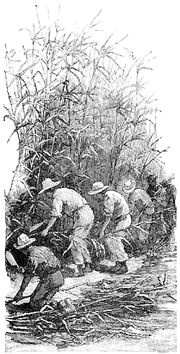 |
||||
|
||||
|
|
Sugar’s Not-So-Sweet LegacyPlantations worldwide regularly face off against the environmentWhat is the environmental impact of sugar, aside from its not-so-healthy aspects?—Mary Oakes, via e-mail
Roughly 145 million tons of sugars are produced in 121 countries each year, according to the World Wildlife Fund. Sugar production does indeed take its toll on surrounding soil, water and air, especially in threatened tropical ecosystems near the equator. A 2004 World Wildlife Fund report, Sugar and the Environment, shows that sugar may be responsible for more biodiversity loss than any other crop, due to its destruction of habitat to make way for plantations, its intensive use of water for irrigation, its heavy use of agricultural chemicals and the polluted wastewater that is routinely discharged in sugar production. One extreme example of environmental destruction by the sugar industry is the Great Barrier Reef off of Australia. Its waters suffer from large quantities of effluents, pesticides and sediment from sugar farms, and the reef itself is threatened by the clearing of land that has destroyed the wetlands that are an integral part of the reef’s ecology. Meanwhile, in Papua New Guinea, soil fertility has declined by about 40 percent over the last three decades in heavy sugar cane cultivation regions. And some of the world’s mightiest rivers — including the Niger in West Africa, the Zambezi in Southern Africa, the Indus River in Pakistan and the Mekong River in Southeast Asia — have nearly dried up as a result of thirsty, water-intensive sugar production. World Wildlife Fund blames Europe and, to a lesser extent, the U.S., for over-producing sugar because of its profitability and therefore large contribution to the economy. Environmental groups are working on public education and legal campaigns to try to reform the international sugar trade. “The world has a growing appetite for sugar,” says World Wildlife Fund’s Elizabeth Guttenstein. “Industry, consumers and policy makers must work together to make sure that in the future sugar is produced in ways that least harm the environment.” Here in the United States, the health of one of the country’s unique ecosystems, Florida’s Everglades, is seriously compromised after decades of sugar cane farming. Tens of thousands of acres of the Everglades have been converted from teeming sub-tropical forest to lifeless marshland due to excessive fertilizer run-off and drainage for irrigation. A tenuous agreement between environmentalists and sugar producers under a Comprehensive Everglades Restoration Plan has ceded some sugar cane land back to nature and reduced water usage and fertilizer run-off. Only time will tell if these and other restoration efforts will help bring back Florida’s once teeming river of grass.
For more information: • World Wildlife Fund: www.panda.org. • Comprehensive Everglades Restoration Plan: www.evergladesplan.org. |
|||
|
|
||||
|
© COPYRIGHT 2004 by New Bay Enterprises, Inc. All rights reserved. |


 Sugar is ever-present in products we consume every day, yet we rarely give a second thought as to how and where it is produced and what toll it may take on the environment.
Sugar is ever-present in products we consume every day, yet we rarely give a second thought as to how and where it is produced and what toll it may take on the environment.